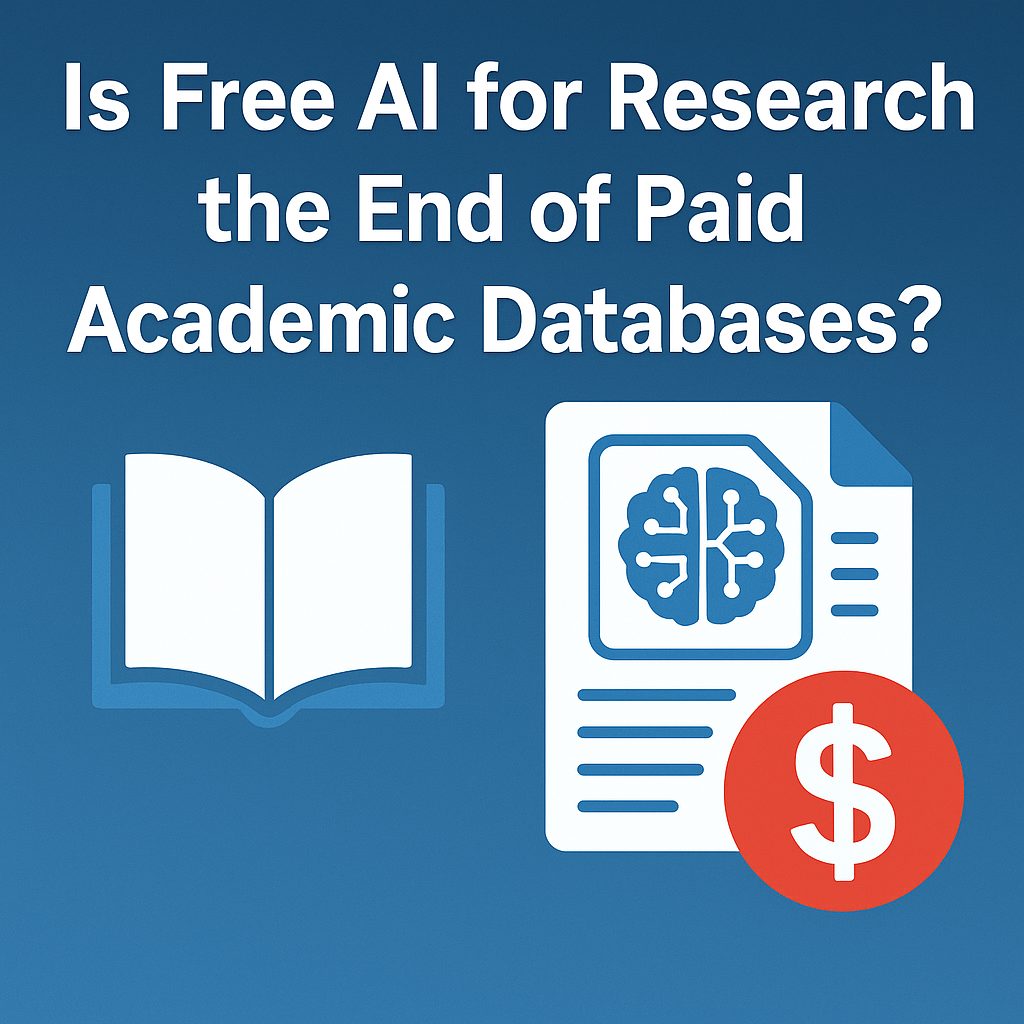
For decades, access to scholarly knowledge has been gated by academic publishers and expensive database subscriptions. Institutions pay thousands—sometimes millions—of dollars a year to access platforms like Elsevier, JSTOR, and Web of Science. Individual researchers, especially those unaffiliated with well-funded universities, have had to navigate paywalls and limited access, often relying on informal sharing networks just to read the research they need.
But now, a new player is threatening to disrupt the model entirely: free AI tools for research.
From summarizing dense papers to generating citations and even drafting literature reviews, open-access AI models and tools are redefining what it means to interact with academic content. The question is: Are they powerful enough to bring down the paywalls — and the businesses — of the legacy academic database industry?
The Rise of AI-Powered Research Tools
In the last two years, dozens of free and freemium AI tools have emerged to help with nearly every stage of academic work:
-
AI Paper Summarizers (e.g., SciSummary, ScholarAI, PaperChat): These digest lengthy PDFs into concise, plain-language summaries.
-
Literature Review Generators: These use natural language processing to identify relevant papers and synthesize themes across a topic.
-
Citation and Research Article Generators: Tools that assist in formatting, auto-filling metadata, and even proposing references.
-
“Find Similar Researchers” Engines: AI tools that recommend authors or institutions based on topic clustering.
Importantly, many of these tools leverage open-access databases like arXiv, PubMed Central, and Semantic Scholar. Others use crawled abstracts or summaries, staying just on the right side of copyright law.
What Makes AI a Threat to Paid Databases?
1. Function Over Access
Traditionally, paid databases offered three things: content, searchability, and metadata structuring. AI tools now offer smarter search, automated summaries, and contextual recommendations—without needing to license millions of papers. For many users, that’s enough.
2. Lowering the Barrier for Independent Researchers
The people most empowered by AI research tools are often independent scholars, students, and researchers from underfunded regions. For them, free tools can match (or exceed) the functionality of paid databases—without institutional access.
3. Free Tools Are “Good Enough”
While no AI tool replaces expert curation or comprehensive coverage (yet), many are “good enough” for early-stage research, brainstorming, or scanning the literature—roles traditionally dominated by paid platforms.
The Catch: What AI Can’t (Yet) Do
While free AI tools are powerful, they currently face serious limitations:
-
Access to Full-Text Content: Most AI models don’t have access to subscription-only papers. Without full text, summaries and literature reviews can be shallow or incomplete.
-
Copyright Restrictions: Legal boundaries limit what data AI tools can ingest or present. Paid platforms still offer fully licensed, high-quality content.
-
Academic Trust: Institutions and journals may be slow to trust AI-generated summaries or references, especially when accuracy and nuance are critical.
-
Bias and Misrepresentation: Without human oversight, AI summarizers can misinterpret findings or reinforce biases in the training data.
A Middle Ground: Paid Databases with AI Features
Recognizing the threat, traditional academic publishers are fighting back—by integrating AI into their own platforms:
-
Elsevier has introduced AI tools for search and literature curation.
-
Springer and Wiley are experimenting with generative AI to help summarize papers.
-
Even citation databases like Scopus and Web of Science are incorporating recommender systems and topic maps.
The result? The future might not be a full takeover by free AI tools, but rather a blending of AI features into paid platforms—at a price.
Conclusion: Disruption is Here, but So is Reinvention
Free AI tools are democratizing access to scientific knowledge in ways that seemed unthinkable a few years ago. For early-stage research, brainstorming, and even education, they are already chipping away at the value proposition of paid academic databases.
But the paywalled giants won’t disappear overnight. They still offer full-text access, peer-reviewed quality, and long-standing trust in academic circles. What’s more likely is a restructuring of value: databases will be forced to earn their fees not just by hoarding content, but by offering better, AI-enhanced tools themselves.
So is this the end of paid academic databases?
Not yet. But for the first time, they’re being forced to compete.